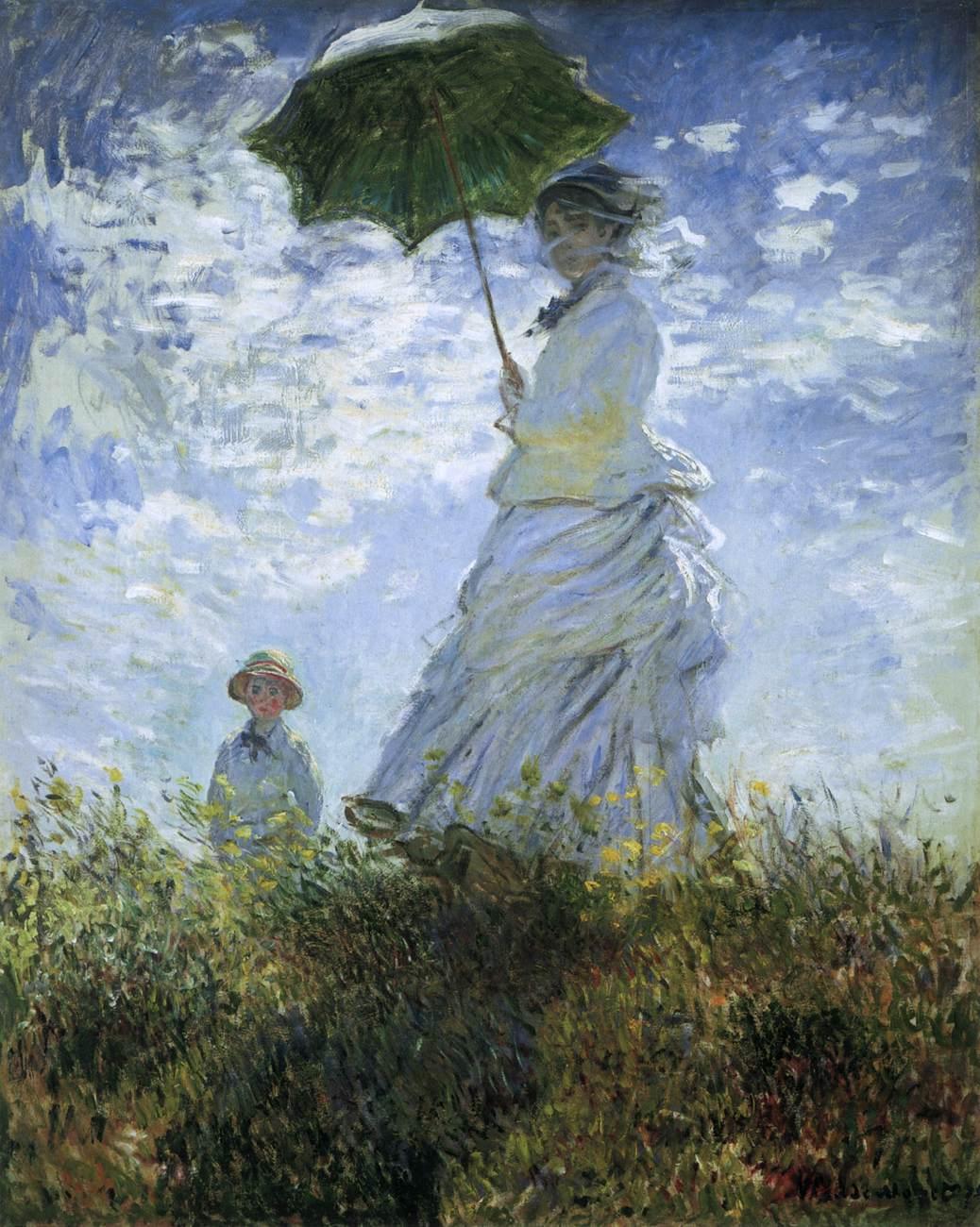Claude Monet’s 1875 painting “Woman with a Parasol” is a true masterpiece of the Impressionist movement, capturing the ephemeral beauty of a moment with breathtaking skill and sensitivity. This iconic work, also known as “The Stroll” or “Woman with a Parasol – Madame Monet and Her Son,” is a testament to Monet’s genius and a landmark in the history of art.
To fully appreciate the significance of “Woman with a Parasol,” it’s essential to understand the revolutionary nature of the Impressionist movement. In the 1870s, the art world was dominated by the strict rules and conventions of academic painting. Artists were expected to create highly detailed, carefully composed works that adhered to traditional notions of beauty and form.
But Monet and his fellow Impressionists challenged these norms, seeking to capture the fleeting effects of light, color, and atmosphere in their paintings. They worked outdoors, en plein air, to better observe the changing qualities of natural light. Their brushwork was loose and expressive, with visible strokes that conveyed a sense of spontaneity and immediacy.
“Woman with a Parasol” exemplifies these Impressionist principles. The painting depicts Monet’s wife, Camille, and their son, Jean, on a hillside overlooking the sea. The composition is strikingly asymmetrical, with Camille dominating the foreground, her figure rendered in vivid, almost luminous hues. Jean, in contrast, is a smaller presence in the background, his form more subtly integrated into the landscape.
But it’s Monet’s treatment of light and color that truly sets this painting apart. The sunlight filtering through the parasol casts a warm glow on Camille’s face and dress, creating a sense of radiance and vitality. The shadows are rendered in shades of blue and violet, a departure from the conventional use of black and gray. This innovative use of color captures the vibrancy and dynamism of the natural world, as if the very air is pulsating with energy.
Monet’s brushwork in “Woman with a Parasol” is equally remarkable. His strokes are quick and decisive, conveying a sense of movement and life. The texture of the canvas is almost palpable, with the thick application of paint creating a tactile, three-dimensional quality. This technique was a revelation in its time, breaking free from the smooth, blended surfaces of traditional painting and paving the way for the more expressive, abstracted styles of the 20th century.
But “Woman with a Parasol” is more than just a technical triumph; it’s also a deeply personal and poetic work. The tender depiction of Camille and Jean suggests Monet’s deep affection for his family, as well as his joy in the simple pleasures of life. The parasol itself, a common accessory in 19th-century France, takes on a symbolic significance in this context, representing shelter, protection, and the gentle nurturing presence of the maternal figure.
At the same time, the painting hints at deeper themes of transience and the passage of time. The figures are captured in a moment of leisure, but the rapidly shifting clouds and the play of light and shadow suggest the fleeting nature of such moments. There’s a sense of both the beauty and the brevity of human experience, a theme that would preoccupy Monet throughout his career.
“Woman with a Parasol” had a profound impact on the art world, helping to establish Impressionism as a major force and influencing generations of artists to come. Its emphasis on light, color, and atmosphere over strict realism and detail laid the groundwork for the more experimental and abstracted styles of the 20th century, from Post-Impressionism to Modernism.
Today, the painting is held in the collection of the National Gallery of Art in Washington, D.C., where it continues to captivate and inspire visitors from around the world. Its enduring appeal lies not only in its technical brilliance but in its ability to evoke a sense of wonder and joy in the face of nature’s beauty.
In conclusion, “Woman with a Parasol” is a true icon of art history, a painting that encapsulates the spirit and innovations of the Impressionist movement. Through his masterful use of light, color, and brushwork, Monet created a work of profound beauty and emotional resonance, one that continues to speak to us across the centuries. Whether you’re an art aficionado or simply someone who appreciates the power and magic of visual expression, this painting is an essential part of our cultural heritage, a testament to the enduring human impulse to create and to find meaning in the world around us.












